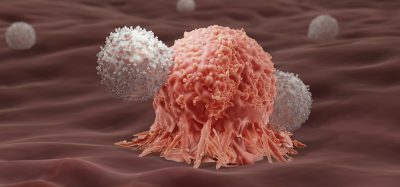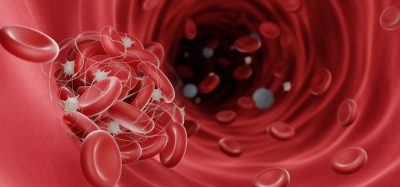AI targets protein linked to most human cancers
Posted: 4 June 2025 | Drug Target Review | No comments yet
Scientists have used AI to design a molecule that disrupts a key protein interaction driving up to 70 percent of cancers – once thought impossible to drug.


Insilico’s approach began with its Chemistry42 platform, which uses generative AI to design new molecules with optimal chemical properties. The research team applied ligand-based generation techniques and anchored key pharmacophores to design inhibitors targeting WDR5. From this, compound 8 (IC50 = 16.35 μM) and compound 9 (IC50 = 1.91 μM) showed clear improvements over the reference compound (IC50 = 20.86 μM).
With support from Insilico’s physics-based modelling module, AlChemistry, the team further refined these hits into potent leads. One standout, named 9c-1, exhibited a 35-fold increase in activity over an earlier analogue, achieving sub-micromolar binding affinity.
In real terms, this means researchers may finally have a shot at drugging one of cancer’s most notorious drivers. If further studies hold up, this AI-designed molecule could form the basis of a new kind of targeted therapy for some of the hardest-to-treat tumours.
“The research once again demonstrates how our AI-powered platforms can rapidly unlock new possibilities in drug discovery, especially for targets previously deemed undruggable,” said Dr Xiao Ding, Head of Chemistry & DMPK and Senior Vice President of Medicinal Chemistry at Insilico Medicine.
Redefining what’s possible in early drug discovery
Insilico has been at the forefront of AI-driven drug design since first proposing the concept in 2016. Its commercially available Pharma.AI platform now integrates deep generative models, reinforcement learning, and automation to drastically accelerate early-stage R&D.
From 2021 to 2024, the company has progressed 22 internal programmes from concept to development candidate (DC) in just 12–18 months, a fraction of the 2.5 to 4 years typically required using conventional methods. Each programme involved the synthesis and testing of 60–200 molecules, highlighting the platform’s scalability and precision.
The discovery of 9c-1 offers compelling proof that even the most elusive targets can be drugged with the right combination of AI and molecular insight. As the compound advances towards further preclinical evaluation, it sets a new benchmark for what’s achievable in oncology drug discovery.
This study was published in Chemical Biology & Drug Design.
Related topics
Artificial Intelligence, Drug Discovery, Drug Discovery Processes, Oncology, Small molecule
Related conditions
Cancer
Related organisations
Huadong Medicine Company, Insilico Medicine








